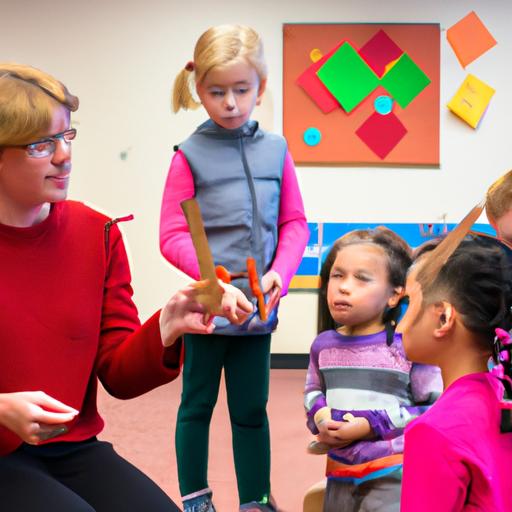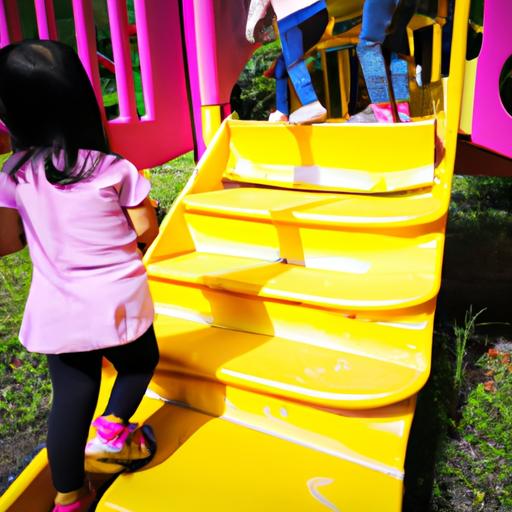What is the High Scope Approach to Early Childhood Education?

As parents, we all want the best for our children. We understand that their early years are crucial for their development and future success. That’s why early childhood education plays a vital role in shaping their growth. One approach that has gained significant attention in recent years is the High Scope Approach. But what exactly is the High Scope Approach, and why is it so important?
Understanding the High Scope Approach

The High Scope Approach to early childhood education is a comprehensive and research-based pedagogy that focuses on active learning and child-centered experiences. Developed in the 1960s by Dr. David Weikart, this approach emphasizes the importance of children actively participating in their learning process.
At its core, the High Scope Approach believes in promoting hands-on exploration and problem-solving. It encourages children to make choices, plan their activities, and reflect on their experiences. By giving children the freedom to explore and make decisions, the High Scope Approach fosters independence, critical thinking, and problem-solving skills from an early age.
Importance of Early Childhood Education

Before we delve deeper into the High Scope Approach, let’s first understand why early childhood education is crucial. Numerous studies have shown that early childhood is a period of significant brain development. During these years, children’s brains are highly receptive to learning and forming connections.
Quality early childhood education programs, such as the High Scope Approach, provide a nurturing and stimulating environment that supports optimal brain development. This foundation sets children up for success in later stages of education and life.
Purpose of the Article
Now that we have a basic understanding of the High Scope Approach and the significance of early childhood education, the purpose of this article is to explore the various aspects of the High Scope Approach in detail. We will discuss its principles, implementation strategies, benefits, criticisms, and more. By the end of this article, you will have a comprehensive understanding of the High Scope Approach and its impact on early childhood education.
So, are you ready to dive into the world of the High Scope Approach and discover how it can shape your child’s educational journey? Let’s begin!
Understanding the High Scope Approach
Origins and History of High Scope Approach
The High Scope Approach to early childhood education has a rich history that dates back to the 1960s. It was developed by Dr. David Weikart and his colleagues at the High Scope Educational Research Foundation in Michigan, USA. Driven by a desire to improve educational outcomes for disadvantaged children, they designed a program that focused on active learning and child empowerment.
Principles and Philosophy of High Scope Approach
The High Scope Approach is rooted in a set of core principles and a child-centered philosophy. It believes that children learn best when they are actively engaged in hands-on experiences and have a say in their learning process. The principles of the High Scope Approach include:
-
Active Learning: Children learn by doing, rather than passively receiving information. They engage in hands-on activities that promote exploration and problem-solving.
-
Child Choice: The High Scope Approach values children’s autonomy and encourages them to make choices about their activities, materials, and interactions.
-
Adult-Child Interaction: Teachers play a crucial role in the High Scope Approach by actively engaging with children, asking open-ended questions, and supporting their learning.
-
Learning Environment: The physical environment is carefully designed to promote independence, creativity, and collaboration. It includes various learning centers and materials that reflect children’s interests and stimulate their curiosity.
Key Features and Components of High Scope Approach
The High Scope Approach incorporates several key features and components that contribute to its effectiveness in early childhood education. These include:
-
Plan-Do-Review Cycle: This cycle allows children to plan their activities, carry them out, and reflect on their experiences. It helps them develop decision-making skills, self-evaluation, and goal-setting abilities.
-
Daily Routine: The High Scope Approach follows a consistent daily routine that provides structure and predictability for children. It includes a balance of child-initiated and teacher-led activities, as well as individual and group experiences.
-
Assessment: The High Scope Approach utilizes authentic assessment methods, such as observations and portfolios, to track children’s progress and understand their strengths and areas for growth. This information guides teachers in planning appropriate learning experiences and individualized support.
By understanding the origins, principles, and key components of the High Scope Approach, we can gain valuable insights into its implementation and the positive impact it can have on early childhood education. In the next section, we will explore how the High Scope Approach is put into practice in the classroom.
Implementing the High Scope Approach in Early Childhood Education
The High Scope Approach to early childhood education places a significant emphasis on the role of teachers, the classroom environment, and the daily routine and activities. Let’s explore these aspects in detail:
Role of Teachers in High Scope Approach
In the High Scope Approach, teachers are seen as facilitators and co-learners rather than authority figures. They play a crucial role in creating a supportive and engaging learning environment for children. Teachers observe and interact with children, carefully documenting their interests and progress. This information helps in designing individualized learning plans and activities that cater to each child’s unique needs.
Teachers also engage in intentional teaching, where they plan and provide opportunities for children to explore and learn through hands-on experiences. They encourage children to ask questions, think critically, and solve problems independently. By fostering a positive and nurturing relationship with each child, teachers create a safe space where children feel valued and motivated to actively engage in their learning journey.
Classroom Environment and Materials
The classroom environment in the High Scope Approach is carefully designed to stimulate curiosity, exploration, and creativity. It is organized into various learning centers or areas, such as reading corners, art stations, sensory areas, and dramatic play spaces. These centers are stocked with a wide range of age-appropriate materials and resources that encourage children to explore different concepts and develop various skills.
The materials used in the High Scope Approach are open-ended, allowing for multiple uses and interpretations. Children are encouraged to manipulate and interact with these materials to construct their understanding of the world around them. The classroom environment is set up to promote independence, with materials and resources easily accessible to children, enabling them to make choices and engage in self-directed learning.
Daily Routine and Activities in High Scope Approach
The daily routine in the High Scope Approach follows a predictable structure, providing a sense of security and stability for children. It includes a balance of child-initiated and teacher-led activities. During child-initiated time, children have the freedom to choose their activities, plan, and carry them out. This promotes autonomy and decision-making skills.
Teacher-led activities are designed to introduce new concepts, skills, or experiences. These activities often take the form of small-group discussions, circle times, or projects that encourage collaboration and social interaction. The High Scope Approach also emphasizes the importance of outdoor play, allowing children to explore nature and engage in physical activities that promote gross motor skills and overall well-being.
By implementing the High Scope Approach in early childhood education, teachers create an environment that fosters active learning, independence, and social-emotional development. The combination of supportive teachers, an engaging classroom environment, and a well-structured daily routine ensures that children thrive and reach their full potential.
Benefits and Advantages of High Scope Approach
The High Scope Approach to early childhood education offers a multitude of benefits that positively impact children’s development. Let’s explore some of the key advantages this approach brings to the table.
Developmental Benefits for Children
One of the primary advantages of the High Scope Approach is its focus on holistic child development. This approach acknowledges that children are unique individuals with diverse strengths, interests, and learning styles. By tailoring the learning experiences to meet individual needs, the High Scope Approach promotes comprehensive development.
Through hands-on activities and experiential learning, children develop essential cognitive, physical, and language skills. They learn to think critically, solve problems, and make connections between different concepts. This approach encourages curiosity and nurtures a love for lifelong learning.
Promoting Active Learning and Engagement
The High Scope Approach places great emphasis on active learning, where children take an active role in their education. Rather than passively receiving information, children engage in hands-on experiences, experiments, and projects. This active involvement fosters a deeper understanding of concepts and encourages children to become active participants in their own learning process.
By providing opportunities for decision-making, planning, and reflection, the High Scope Approach empowers children to take ownership of their education. This active engagement not only enhances their academic performance but also cultivates essential skills such as problem-solving, creativity, and critical thinking.
Enhancing Social and Emotional Development
In addition to academic growth, the High Scope Approach recognizes the importance of social and emotional development in early childhood. The approach promotes positive relationships and interactions among children, teachers, and families.
Through collaborative activities and group experiences, children develop vital social skills such as communication, cooperation, and empathy. They learn to work together, resolve conflicts, and respect diverse perspectives.
Furthermore, the High Scope Approach nurtures emotional intelligence by encouraging children to express their feelings, develop self-regulation strategies, and build resilience. This emphasis on social and emotional development not only prepares children for future interpersonal relationships but also contributes to their overall well-being.
In the next section, we will explore the criticisms and challenges associated with the High Scope Approach. Stay tuned to gain a balanced perspective on this popular early childhood education approach.
Criticisms and Challenges of the High Scope Approach
While the High Scope Approach to early childhood education has gained recognition and popularity, it is not without its critics. Let’s explore some of the potential limitations and drawbacks associated with this approach, as well as ways to address these challenges.
Potential Limitations and Drawbacks
-
Limited Focus on Academics: One criticism of the High Scope Approach is that it places less emphasis on early academic skills compared to more traditional approaches. Some argue that this may put children at a disadvantage when transitioning to formal schooling.
-
Time-Intensive Planning: Implementing the High Scope Approach requires careful planning and preparation by teachers. This can be time-consuming, especially in busy classrooms with limited resources.
-
Lack of Structure: Critics argue that the High Scope Approach’s emphasis on child-led activities may lead to a lack of structure and discipline in the classroom. They believe that a more structured approach can better prepare children for the routines and expectations of formal education.
Addressing the Challenges in Implementing the High Scope Approach
-
Balancing Academics and Play: To address concerns about academic readiness, educators implementing the High Scope Approach can incorporate intentional teaching moments that focus on early literacy, numeracy, and other essential academic skills. By striking a balance between play-based learning and structured instruction, children can develop both their social-emotional skills and academic foundations.
-
Professional Development and Support: Providing teachers with adequate professional development and ongoing support can help them effectively implement the High Scope Approach. Training opportunities can enhance their understanding of the approach’s principles, strategies, and assessment methods.
-
Individualization and Differentiation: Recognizing that every child is unique, educators can tailor the High Scope Approach to meet individual needs. By differentiating activities and experiences based on children’s interests, abilities, and learning styles, the approach can become more inclusive and effective.
Comparison with Other Early Childhood Education Approaches
It is essential to consider that there are various approaches to early childhood education, each with its strengths and weaknesses. Comparing the High Scope Approach with other approaches, such as Montessori, Reggio Emilia, or Waldorf, can provide valuable insights into their similarities and differences. Exploring multiple approaches allows educators and parents to make informed decisions based on the needs and preferences of their children.
By acknowledging and addressing the criticisms and challenges associated with the High Scope Approach, educators can maximize its potential and ensure a well-rounded early childhood education experience for children. Let’s now move on to the final section, where we summarize our findings and highlight the importance of choosing the right approach for our children’s education.
Conclusion
In conclusion, the High Scope Approach to early childhood education offers a unique and effective approach to nurturing young minds. By focusing on active learning, child-centered experiences, and fostering independence, this approach empowers children to become confident, capable, and curious learners.
Through the High Scope Approach, children are given the freedom to explore, make choices, and engage in hands-on activities that promote critical thinking and problem-solving skills. The emphasis on reflection and planning also helps children develop important life skills that extend beyond the classroom.
Choosing the right approach to early childhood education is crucial for your child’s development and future success. The High Scope Approach, with its research-based principles and proven benefits, provides a strong foundation for children’s growth and learning.
At tintucvn365.com, we understand the importance of providing high-quality education for children. That’s why we believe in promoting approaches like the High Scope Approach, which prioritize the holistic development of children and lay the groundwork for lifelong learning.
So, if you’re a parent or an educator looking for an innovative and effective approach to early childhood education, consider exploring the High Scope Approach. Your child’s educational journey will be enriched, and they will be equipped with invaluable skills and knowledge that will benefit them throughout their lives.
Remember, the early years are a critical time for learning and development. By investing in high-quality early childhood education, we are investing in the future of our children and our society as a whole.
Let’s embark on this journey together and give our children the best start in life with the High Scope Approach to early childhood education.





